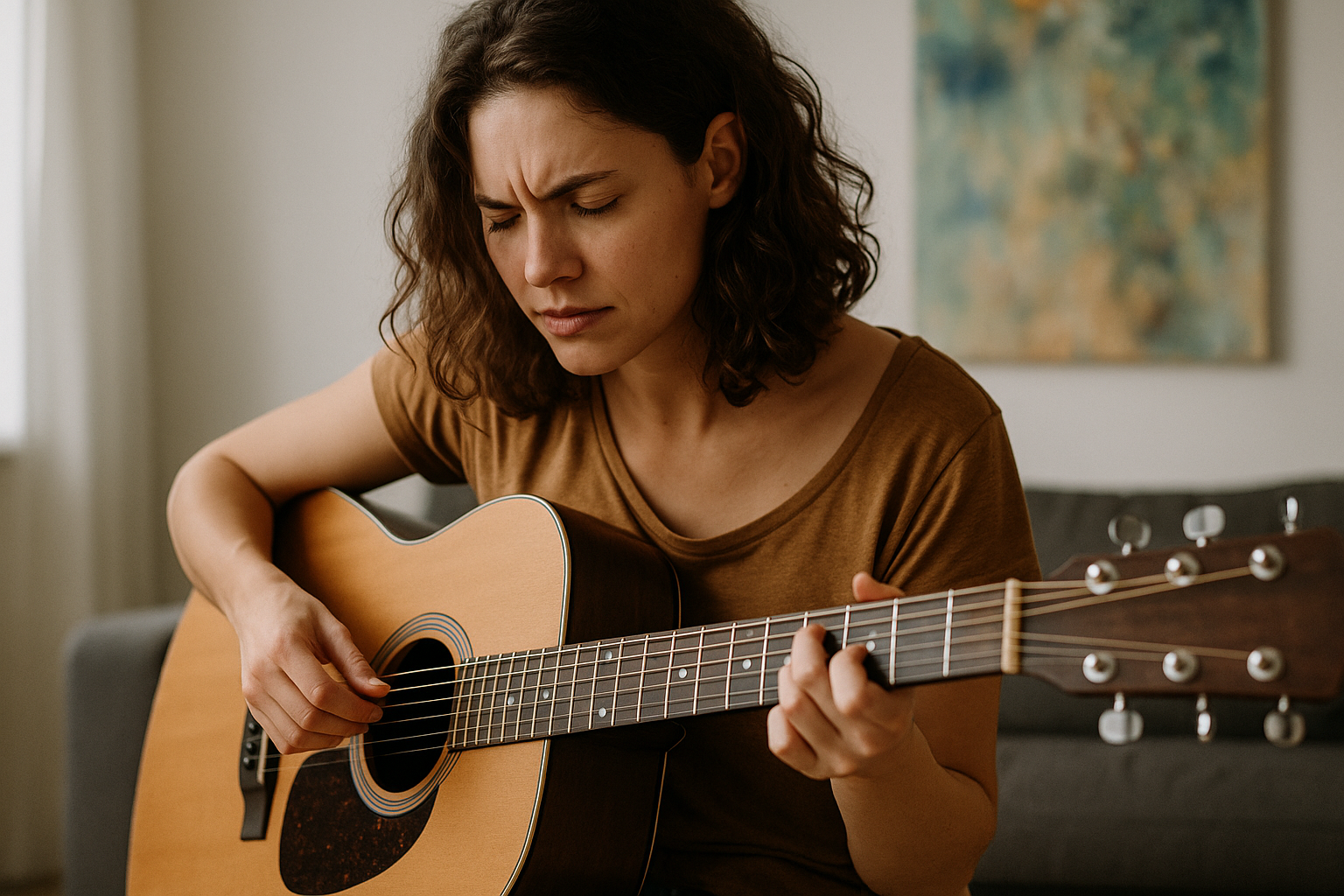When most beginners think about learning music, they picture reading sheet music, practicing scales, or repeating exercises over and over. While discipline and technique are essential, music is not only about accuracy. At its heart, music is an art form—a way of expressing creativity. Without creativity, music becomes mechanical. With it, music comes alive, carrying emotion, personality, and uniqueness.
In this article, we’ll explore why creativity is vital in music learning, how it interacts with technique, common obstacles to creative expression, and practical ways to nurture creativity as a beginner.
What Is Creativity in Music?
Creativity in music is the ability to go beyond reproducing what’s written on a page. It’s about:
- Personal interpretation: Adding your own dynamics, phrasing, and expression.
- Improvisation: Creating new melodies or rhythms spontaneously.
- Composition: Writing your own songs, even simple ones.
- Experimentation: Trying new sounds, styles, or techniques.
Creativity does not mean ignoring theory or structure—it means using them as tools to build something personal.
Why Creativity Matters in Music Learning
1. Builds Emotional Connection
Creativity allows you to connect emotionally with the music. Instead of simply “playing the notes,” you express feelings through sound.
2. Increases Motivation
Practicing only exercises can feel repetitive. Creative activities like improvising or composing make practice exciting and enjoyable.
3. Strengthens Understanding
When you experiment with scales, chords, or rhythms, you internalize theory more deeply than by memorization alone.
4. Develops Individual Style
Creativity is what makes each musician unique. It allows you to move beyond imitation and develop your own sound.
5. Enhances Performance
Audiences respond not just to accuracy but to expression and personality. Creativity transforms technical playing into captivating performance.
Common Obstacles to Creativity
- Fear of Mistakes
Beginners often think mistakes are failures. But mistakes are part of the creative process. - Overemphasis on Perfection
Trying to play perfectly can stifle experimentation and risk-taking. - Lack of Confidence
Many learners believe they are “not creative,” when in reality, creativity is a skill that grows with practice. - Rigid Learning Methods
Focusing only on sheet music and exercises can limit space for exploration. - Comparison With Others
Measuring yourself against advanced musicians discourages experimentation.
How to Nurture Creativity in Music Learning
1. Allow Time for Play
Set aside part of each practice session to simply explore. Play around with notes, rhythms, or sounds without judgment.
2. Experiment With Improvisation
Start small—use just three notes and invent short melodies. Gradually expand to full scales or chord progressions.
3. Compose Simple Pieces
Even a four-bar melody or chord sequence counts as composition. Writing your own music strengthens creativity.
4. Interpret Existing Music
When learning a piece, try different dynamics, tempos, or articulations. This builds interpretative creativity.
5. Use Backing Tracks
Playing along with backing tracks encourages improvisation and rhythmic creativity.
6. Collaborate With Others
Jamming with friends sparks new ideas and perspectives.
7. Learn From Different Genres
Exploring styles outside your comfort zone broadens your creative vocabulary.
8. Record and Reflect
Recording yourself lets you evaluate creative choices and discover what works.
Practical Creative Exercises
- One-Note Challenge: Create rhythms and dynamics using only a single note.
- Change the Ending: Take a familiar song and invent a new ending.
- Rhythm Swap: Keep the melody of a piece but change the rhythm.
- Mood Shift: Play a happy song in a sad style by altering dynamics and tempo.
- Improvised Dialogue: Alternate short phrases with a friend, responding musically.
Creativity and Technique: A Balanced Relationship
Some beginners think they must master technique before being creative. In reality, creativity and technique grow together. Technique provides the tools, but creativity gives them purpose. Even with limited skills, you can be creative by experimenting with what you know.
How Teachers Encourage Creativity
Good music teachers balance technical exercises with creative exploration. They may encourage students to:
- Improvise endings to scales.
- Write short compositions.
- Experiment with dynamics.
- Play by ear as well as by reading.
If your teacher doesn’t emphasize creativity, you can still incorporate it into your own practice.
The Role of Creativity in Performance
Performing is not just about accuracy. Creative musicians engage audiences by:
- Adding personal interpretation to pieces.
- Communicating emotion through dynamics and phrasing.
- Making improvisations feel spontaneous and alive.
Audiences may forget wrong notes, but they remember expressive, creative performances.
Long-Term Benefits of Cultivating Creativity
- Stronger connection to music.
- Greater motivation to practice.
- Improved problem-solving skills.
- Ability to adapt and play flexibly.
- A unique musical identity.
Final Thoughts: Creativity as the Heart of Music
Music is more than patterns, exercises, and rules—it is an art form rooted in creativity. Without creativity, music is mechanical; with it, music becomes a living expression of who you are.
As a beginner, don’t wait until you “know enough” to be creative. Start today by experimenting, improvising, and making music your own. Each creative step strengthens your skills, deepens your enjoyment, and brings you closer to discovering your unique voice as a musician.
